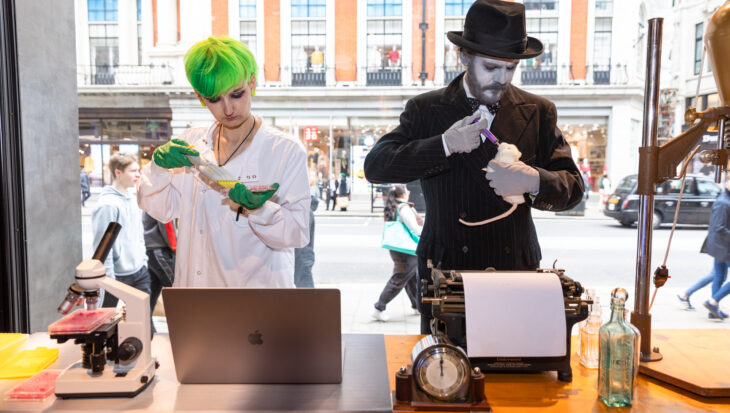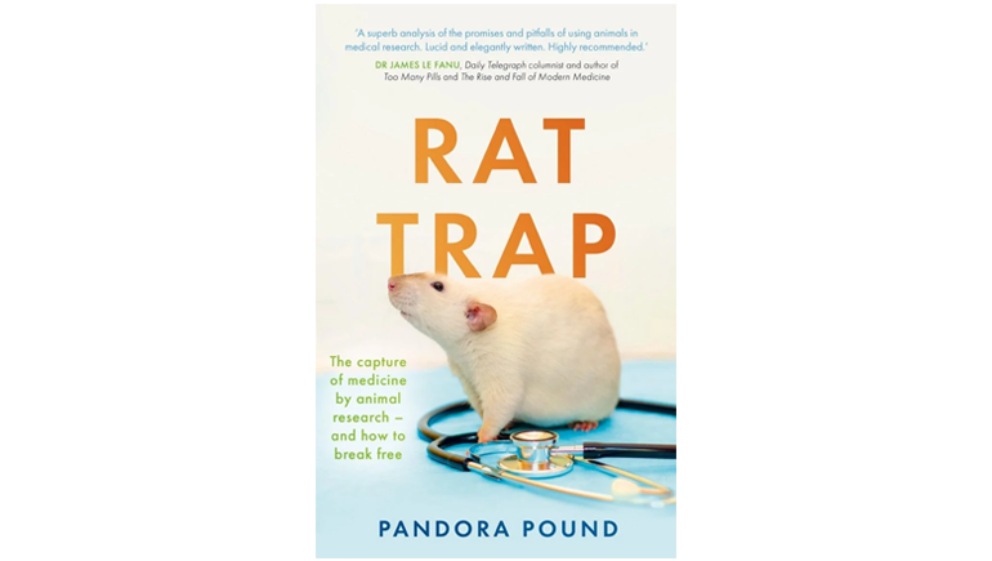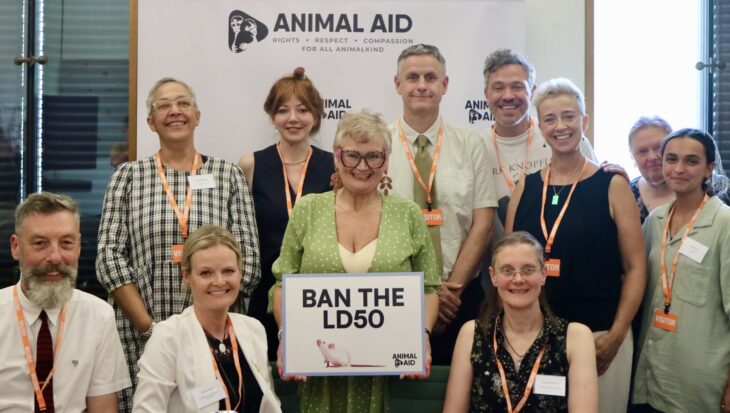This thorough and up-to-date book shows clearly that animal research and safety testing is unnecessary, misleading and wasteful. It is also appallingly cruel, of course, but the book concentrates on the science, and shows that everyone should want an end to animal experiments, even if they don’t care about animal suffering. I urge all animal campaigners to buy this book, and use its contents to inform your letter writing, social media posts, and all your other campaigning about animal experiments.
90% of drugs fail in human trials despite having passed animal tests. For example, the painkiller Vioxx appeared to be safe in animals and indeed has a protective effect on the hearts of mice and some other animals, but caused around 100,000 heart attacks, 38,000 of them fatal, in people in the USA, before it was withdrawn.
Systematic reviews repeatedly show that animal experiments are badly done due to a failure to use random allocation, allocation concealment, blinded outcome assessment and adequate sample sizes. Many animal studies that had appeared to show that a drug worked (in animals in a lab with artificially induced disease) turned out not to show this at all. So there are big problems with animal studies, even if animal models were valid in the first place.
But they aren’t. Species differences mean that results from animals are unavoidably unreliable when applied to people. But could inserting human genetic material into laboratory animals overcome these problems? No. Even when a gene is the same in two species (chimps and humans, for example, are 99% genetically similar), the genes may be expressed differently, and the same gene can make different RNAs. The explosion in the use of transgenic animals has not led to a noticeable increase in useful results. Large numbers of published animal studies (many unsuccessful ones are just not published at all) are never cited, or are only cited by other animal researchers, not by clinical researchers. It is clinical research (i.e. work on people) that has the greatest impact and gives reliable results.
Of course, animal experiments have been involved in the development of many drugs, but that does not mean they were useful. In fact, they may have misled researchers, and hindered progress. And even when an animal test gave the right result, that doesn’t make the method valid. Systematic reviews suggest that getting the right result from animal work is just a fluke.
What about safety testing? TGN1412 was found to be safe in two species of monkeys who are genetically similar to people, even at 500 times the dose that was then given to human volunteers. Nevertheless, there were catastrophic results in people, with the volunteers suffering from multiple organ failure. BIA 10-2474 had been found to be safe in several animal species at doses up to 650 times stronger than those given to the human volunteers – again with catastrophic results, including one death. Afterwards, the drug was tested on human cells, which showed that the drug deactivated multiple proteins, causing disruption to the metabolism of human nerve cells. If the money wasted on animal research had been spent instead on this human cell work, the disaster may have been prevented.
Adverse drug reactions, not including prescription errors, kill more than 10,000 people per year in the UK, despite (or because of) animal safety testing. Plus, we are no doubt losing drugs because they fail the animal tests, that could actually be beneficial to people. We were lucky not to lose tamoxifen which causes liver tumours in rats; and Gleevec causes liver damage in dogs.
New techniques to use instead of animals include organoids, which are three-dimensional clusters of human cells, more like whole organs than just collections of cells, and organs-on-a-chip, which are clusters of human cells through which blood, nutrients and air are pumped, closely mimicking cells in their natural state. These techniques are cheaper and faster than animal tests, and directly relevant to human illness. As well as doing the same things better, organ chips are doing new things that animal models have never been able to do. An Israeli company is trying to build a model of the entire human body. Another developing area of research, which drug companies are already using, is artificial intelligence (AI) in increasingly powerful computers.
So, given all these exciting new developments, why are animals still being used? One reason is that Home Office inspectors have neither the expertise to know whether an experiment is necessary nor the time to look into it, and the research institutions’ own Animal Welfare and Ethical Review Boards (AWERBs) are not really expected to challenge the scientific claims. The book’s author suggested that she could be a candidate for a board, but when she spoke to the committee chair, and said she had some reservations about the use of animals, she was told that she was not the right sort of person. Other reasons are the inertia and vested interests that generally make radical change difficult. People have built careers on animal experiments, regulators play it safe by asking for the tests that everyone else expects, and funders who don’t know any better ask non-animal researchers to back up their work with some animal tests. And researchers themselves may not know about the most recent developments in research, which is perhaps why 452 skin sensitisation tests were conducted on mice in the UK in 2020, even though a validated non-animal method exists and the law states that animals should only be used if a non-animal alternative is unavailable.
However, there is now good reason to hope for change. For example, a new drug was tested on a human-tissue chip modelling the characteristics of chronic inflammatory demyelinating polyneuropathy, and it restored neuronal function. Excitingly, the French pharmaceutical company Sanofi was then allowed to go ahead with a clinical trial without doing any animal tests.
In 2019, the Wellcome Trust’s Sanger Institute announced that it would close its animal facility within the next three years because ‘New laboratory techniques mean we simply do not need the numbers of animals that were once required.’
At the end of 2022, the USA’s FDA Modernization Act became law, which allows non-animal approaches to be used to develop drugs and to investigate their safety and effectiveness.
Clearly, now more than ever is the time to argue the case for stopping animal experiments. With this book by our side, and by referring to other exciting developments such as the LD50 test’s replacement being developed by XCellR8 with support from Animal Aid, we can all play our part in ending the huge ethical and scientific error that is vivisection.
Review by Richard Mountford


